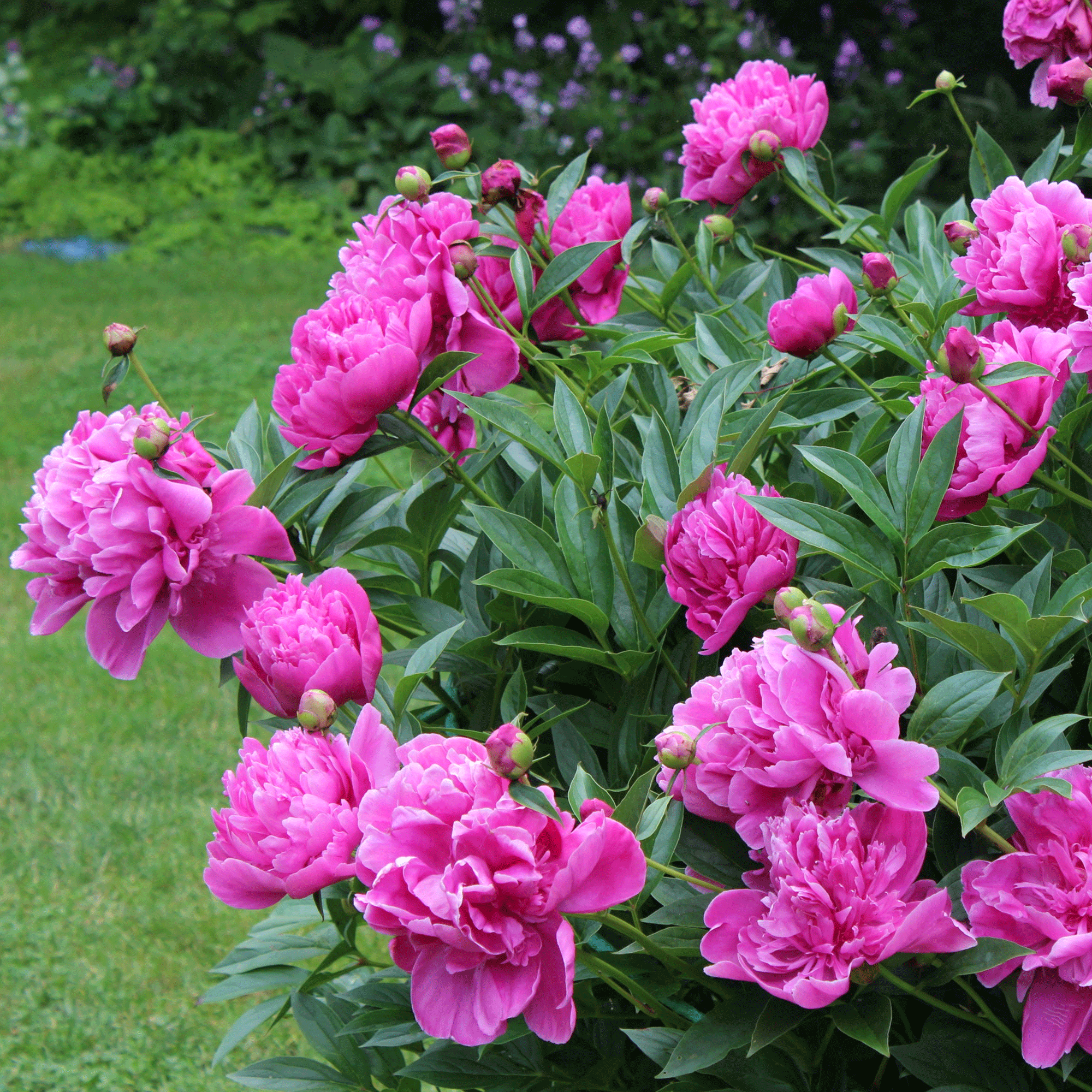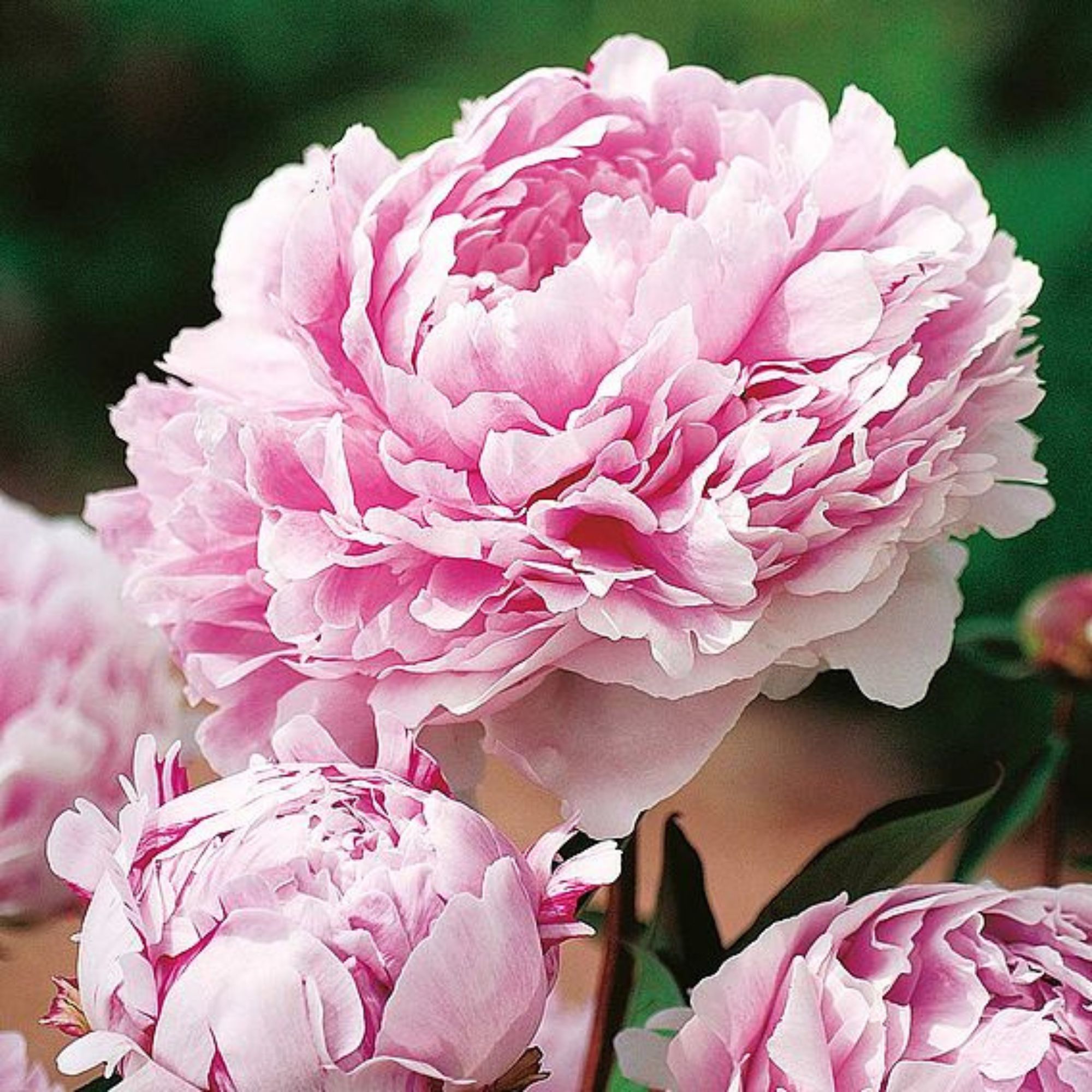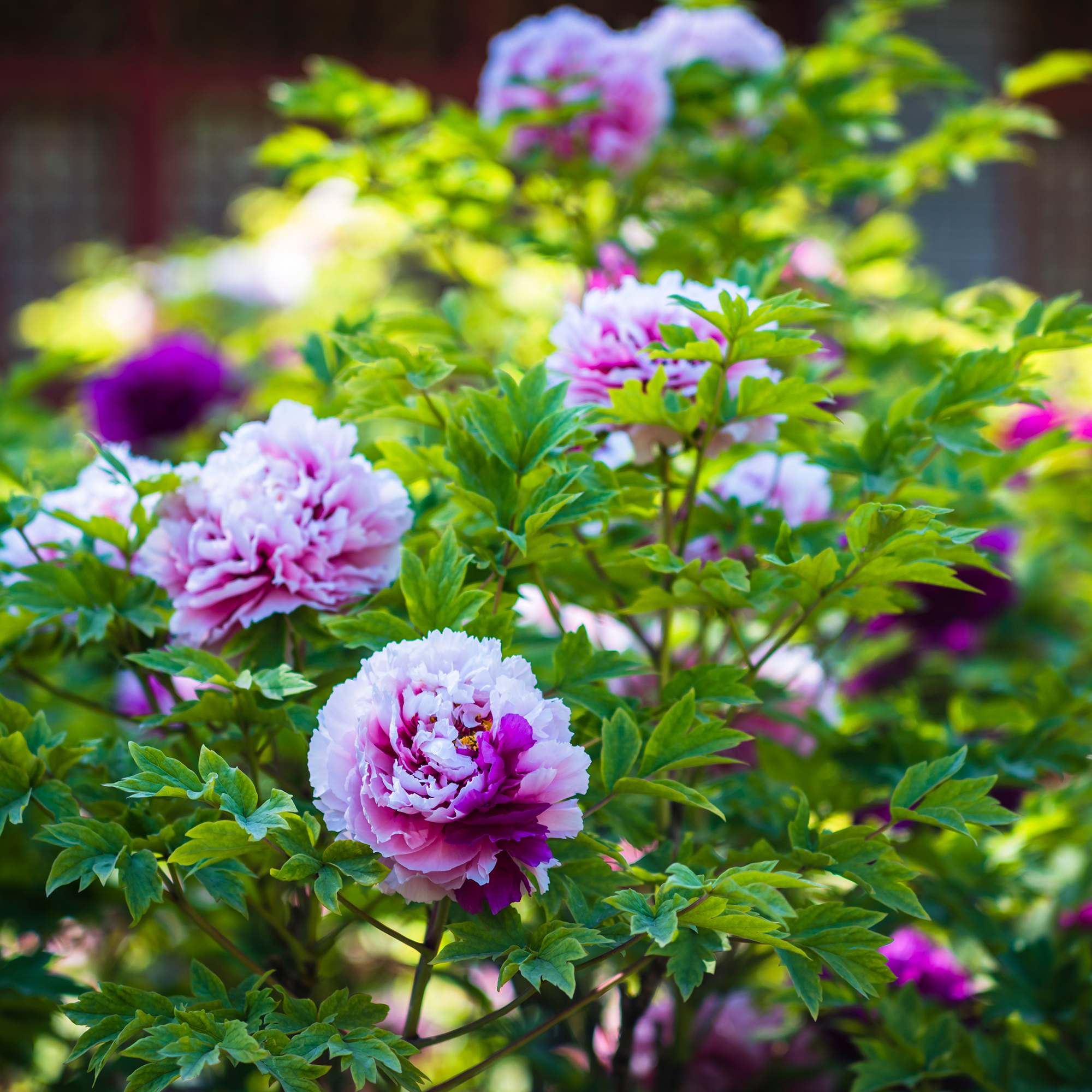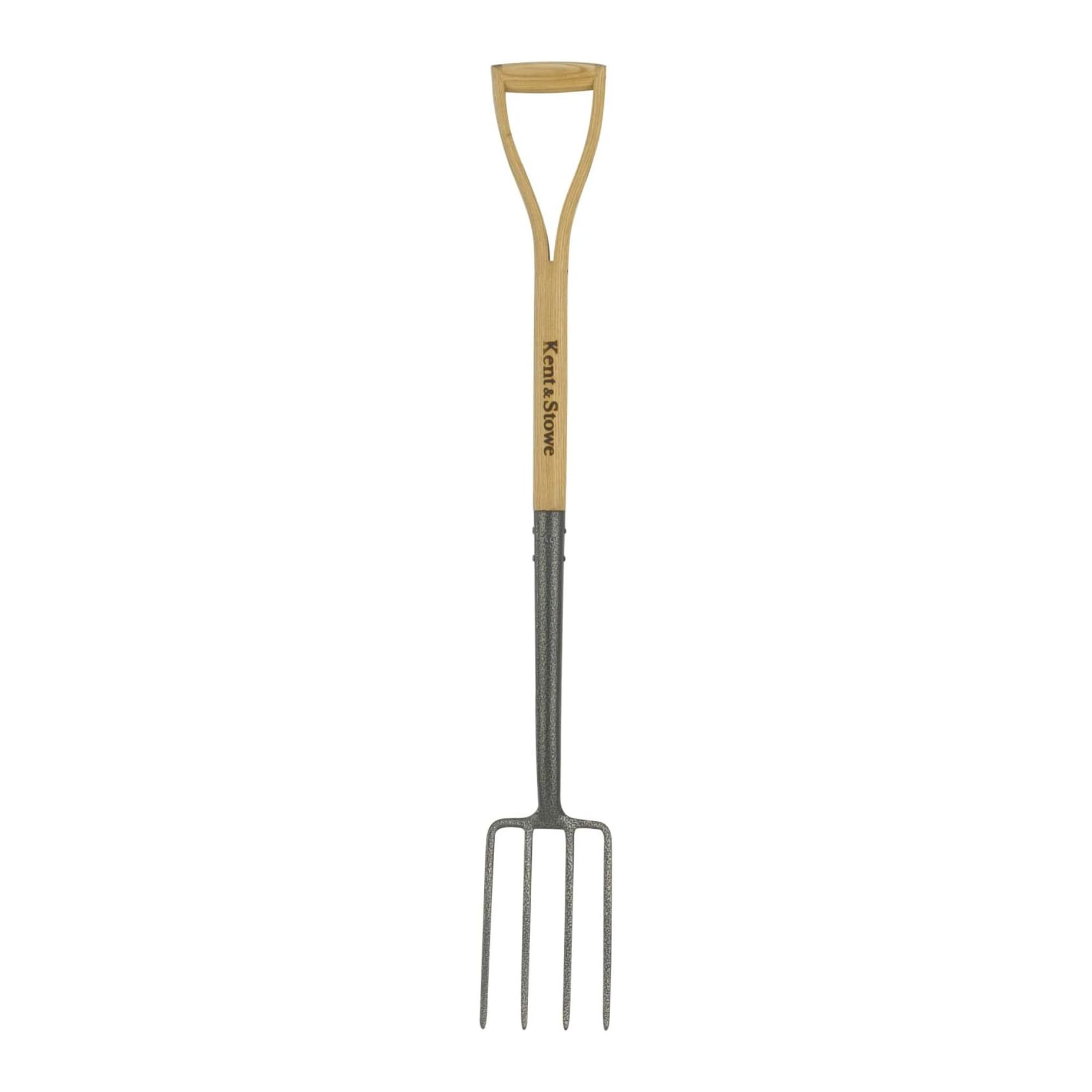How to propagate peonies by division – a step-by-step guide to fill your garden for free
It’s the easiest (and most effective) way to propagate peonies


When they look as good as they do, it’s no surprise that gardeners everywhere want to know how to propagate peonies. And while you could propagate peonies from cuttings, most experts would agree that propagating through division is the easiest (and most effective way) to have these romantic blooms on tap.
Yes, what we love about peonies is that they suit just about every type and size of garden. Whether you want to grow peonies as part of a large lawn filled with flowerbeds or you want to grow peonies in pots to brighten up a balcony or patio, these stunning flowers will provide colour, texture, and style. And you don’t have to keep buying more from the garden centre, either.
Although propagating peonies by division will require a fair bit of care and attention the first time you do it, we have no doubts that you’ll pick it up in no time, allowing you to repeat the process year after year. All you have to do is follow this step-by-step guide.
How to propagate peonies by division
‘Although peonies do not need to be regularly divided for their own benefit, it may be desirable to divide a peony that has become too big for the space available or to create more peony plants in your garden or when moving house,’ explains Alec White, Owner of Primrose Hall Peonies and author of A Love Affair with Peonies. So, this is how to do it.
What you'll need
Step-by-step
1. Consider if it’s the right option
Anyone who has tried to propagate from cuttings will know that it’s not always successful, which is why propagating by division is considered the better option. However, it’s important to note that it’s not always the best option.
If you have herbaceous peonies, propagating by division should definitely be on your to-do list. But if you have tree peonies, it might not be worth your while.
Alec says, ‘Dividing tree peonies is a little more complicated. It is only possible to divide multi-stemmed tree peonies, so if you have a tree peony with a single stem, you will need to prune hard each year to encourage new stems and wait for the plant to become established before it can be divided.’
Sign up to our newsletter for style inspiration, real homes, project and garden advice and shopping know-how
You can check out our guide on when to cut back peonies, but as propagating tree peonies has such a low success rate, it’s probably best to just grow from seed instead.
However, if you plan on propagating herbaceous peonies, you can read on.

2. Choose the right time
Just as there’s the perfect time to plant peonies, there’s also the perfect time to propagate peonies by division. In fact, experts suggest adding this to your list of jobs to do in the garden in October when the peony plant is dormant.
It is possible to successfully lift, move and divide peonies, provided it is done in the late autumn, and care is taken not to damage the root system,' explains Alec.
3. Lift the peony plant

When you’re ready to lift the plant and propagate your peony plant, cut back any leftover faded foliage so that you have good access to the crown. Then, using a garden spade or fork, dig around the peony plant and under the roots before lifting it up.
Be extremely careful when doing this. You want to avoid damaging the roots while also digging up as much of the root as possible.
4. Clean it up
Although you may be inclined to start dividing your peony as soon as you have the crown and the roots in your hand, you need to be patient, as cutting the roots in the wrong place could spell disaster for your plant.
So, you should then clean it up. Simply brush off excess soil with your hands or wash it under running water to get the soil out of the smaller nooks and crannies.
Then, you can move on to the next step.

5. Cut sections of the crown
When you can visibly see every inch of the roots, you can then start cutting off sections to divide and re-plant your peonies.
‘Using either a sharp spade or, if the plant is smaller, a knife, cut the root into the desired number of pieces (or divisions),' advises Alec.
‘Ensure that each division has at least three to five ‘eyes’ or buds, and a substantial, fat, tuberous root (full of food and energy) to sustain the division once replanted. Cut away any infected or rotten roots and discard.’
As the ‘eyes’ are where the new peony stems emerge, you want to make sure that you have a few at your disposal to successfully propagate peonies by division.
6. Replant immediately
After successfully dividing your peony plant, you need to replant the pieces as soon as possible. This is to prevent the potential spread of disease and to give your divisions the best chance at survival. Be careful when handling these sections, though.
‘Try not to damage any white, hairy roots, which are very important in waking the peony up in the spring and getting the plant growing,’ warns Alec. ‘Dig a large enough hole and add some organic matter.’
However, you must ensure you don’t plant your peony sections too far underground. 'Peony plants like to feel the cold in the winter, so the crown of the root should not be more than 2.5-5cm below the surface.’

7. Be patient
Although the chances of successfully propagating peonies by division are high, you still need to give your new plants some TLC over the next few months - and you also need to be patient.
'Remember to carefully water the peony the following year as the root system will not be fully developed and avoid overwatering, which may rot the crown of the root,' says Alec.
‘Be patient and allow your peony time to settle into its new position. Given the substantial lifetime of peony, allowing it a season to settle down is a small price to pay for a long-lived, strong, and healthy plant.’
This may mean that you may not have a fully-fledged flowering peony the next year, but we promise that it’ll be worth the wait.
FAQs
How do you multiply peony plants?
There are two ways to multiply peony plants. You could choose to propagate peonies by cuttings or propagate peonies by division. Both options come with their challenges, but most experts would agree that division is an easier and more effective option.
To propagate peonies by division, you need to lift up the plant and cut the crown into sections. These sections - or divisions - can then be replanted straight away. Just be warned that you may have to wait a year or two for these new sections to fully establish themselves.
What happens if you don't divide peonies?
Peonies can live a very happy and healthy life without being divided. In fact, most people only choose to divide peonies because they want a free supply of extra peonies, they want to cut a larger plant into smaller sections, or the flowers aren't as impressive as they once were.
'Peonies are very unlikely to need dividing and can grow bigger and better over the years,' says Morris Hankinson, director of Hopes Grove Nurseries.
'When they do get to the point that flowering has decreased, the peony clumps can be divided to create more plants and better flowering again.'
As peonies are long-lived plants, they can live for decades without needing to be divided. So, it’s all down to personal choice.
Now you know how to propagate peonies by division, are you going to give it a go yourself?

Lauren Bradbury has been the Content Editor for the House Manual section since January 2025 but worked with the team as a freelancer for a year and a half before that. She graduated with a Bachelor’s degree in English and Creative Writing from the University of Chichester in 2016. Then, she dipped her toe into the world of content writing, primarily focusing on home content. After years of agency work, she decided to take the plunge and become a full-time freelancer for online publications, including Real Homes and Ideal Home, before taking on this permanent role. Now, she spends her days searching for the best decluttering and cleaning hacks and creating handy how-to guides for homeowners and renters alike, as well as testing vacuums as part of her role as the Ideal Home Certified Expert in Training on Vacuums, having spent over 110 hours testing different vacuum models to date!


